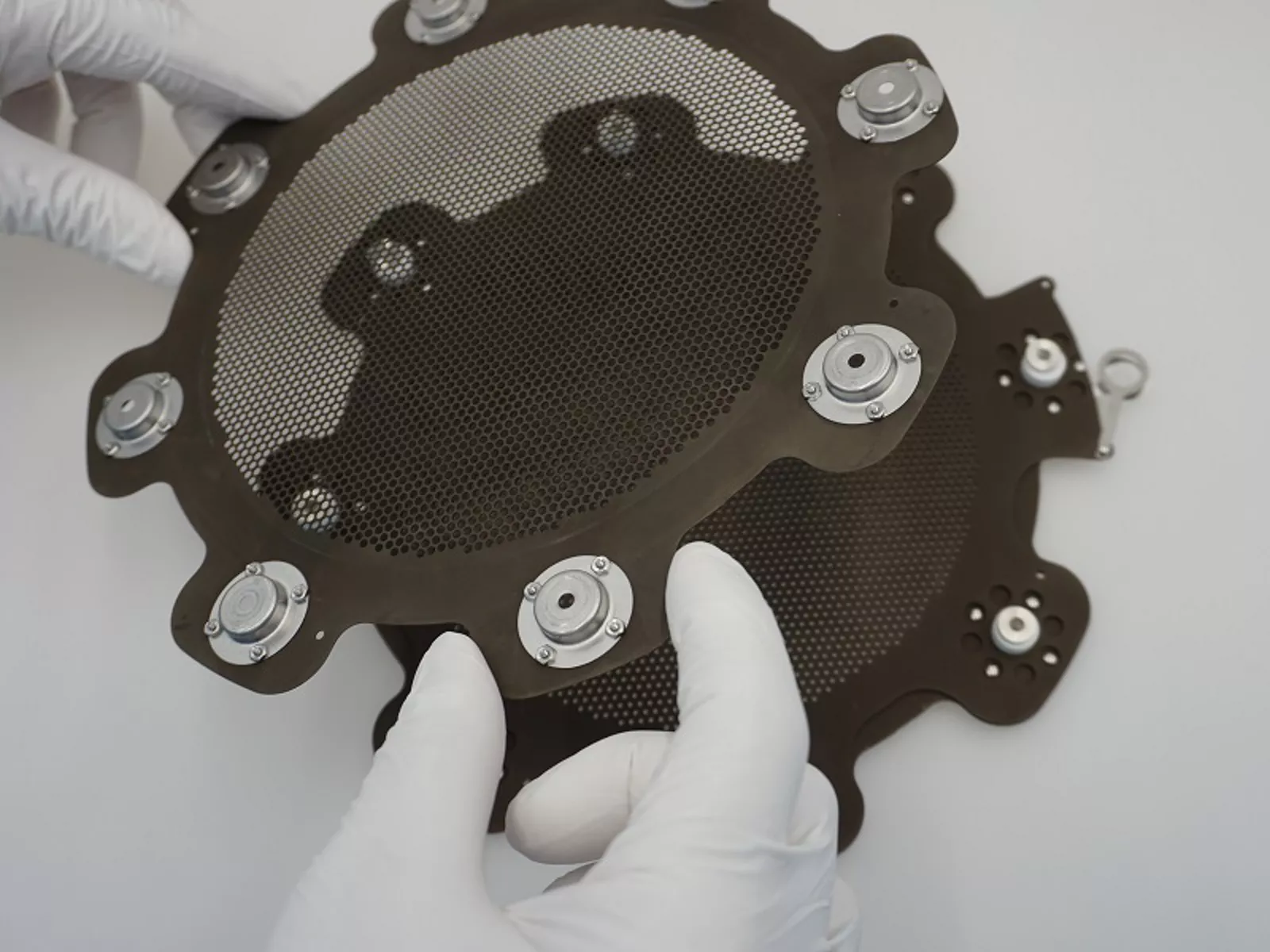
Ion beam technology is not new territory for Plansee. Plansee has been supplying ion beam grids and components to manufacturers in the fields of optical layers, MEMS, RF filters, EUV masks and hard disc drives for 30 years. Plansee experts therefore have comprehensive expertise and technologies on hand for developing, manufacturing, and optimizing customer-specific grids. They are also in the position of assembling installation-ready ion beam grids according to the highest quality standards. For this purpose, Plansee invested in its own in-house clean room as per the ISO6 standard many years ago.
Along with the manufacturing and assembly of new products, the refurbishment of used grids is also one of the skill sets that Plansee is now offering as an enhanced service to its customers. "Refurbishment is playing an increasingly important role in numerous industries as well as in the ion technology segment. And not just because of reasons related to cost efficiency. Aspects such as sustainability and the associated sparing use of valuable resources are also gaining significance. We are happy that we can make such a decisive contribution in this area," says Carmen Müller, Manager Application Group Front End Semiconductor at Plansee HPM.
Ion beam grids currently have a service life of approx. 240 hours depending on the production method. Grids become unusable due to soiling and wear during the irradiation process. Replacement is therefore inevitable to ensure consistent manufacturing quality. Grids are usually disposed of and replaced by new products because manufacturers normally do not have the required capacities and/or technologies for cleaning. Using the professional refurbishment service from Plansee enables companies to now significantly increase the operating times of ion beam grids - around 30-50% depending on the process. At Plansee, we use approx. twelve process steps for the treatment according to clearly defined guidelines and parameters: after an initial analysis of the grids, their individual components are cleaned in several steps, then re-calibrated for quality assurance and finally assembled in a clean room and packaged. This is how we can guarantee that the grid will be returned to the customer after a brief processing time in the best possible condition.


